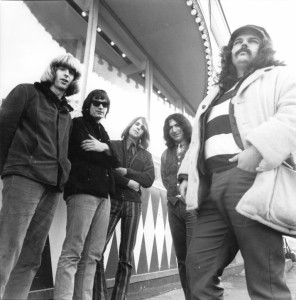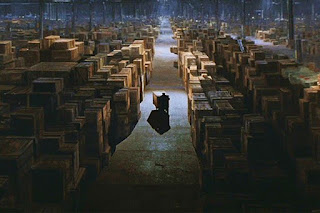Unit 12 Digital Online Archives
Northern Virginia Historical Archive
The Northern Virginia History Archive, a project to record the transformation of Northern Virginia, allows users to upload content and contribute to its collection. I uploaded five pictures from my recent research at the Bull Run Battlefield. The site is simple to use and search. I had no issues uploading the pictures. It was unclear how to tag the photo locations to the map, otherwise it was intuitive. http://novahistory.ctevans.net/
Online Archive
The online Internet Archive, www.archive.org, is an exhaustive resource for free digital media that includes audio, music, video, books, and internet pages. I have used the site for years for the free live music portion, but I explored the other areas for this class. One highlight, The Wayback Machine, which catalogs historical views of web pages. I researched a website that I discovered in high school, www.jambands.com, which covers the "jamband" music scene and bands. I first saw it in a high school computer lab when another student left it open on the desktop. The Wayback Machine's first post of the site is from 02 DEC 1998. I enjoyed looking at the articles for band's from "back then," some of whom are still around. For DC area fans, the 9:30 Club and its "new" location are discussed in a review. I will definitely use this feature more to time travel.
Project Update
Last weekend I returned to the Bull Run Battlefield to explore and photograph the portions I did not visit during my earlier trip. The area was bigger than I expected, and reminded me of the great travels and difficult terrain that the armies had to traverse to engage in the battle. The terrain and roads were a cause of the (spoiler) Union's defeat at First Manassas because their forces arrived piecemeal and did not mass against the small Confederate force early in the day. A park ranger at the visitor's center gave me some good advice and details on the sites, and I recommend you take the ranger tour if you visit the battlefield. Some of my desired spots (ie: the river fords) are now on private property, so I was not able to view them.
I am now confirming the order of battle and timeline of events to enable my digital map.
Cohen and Rosenzweig, Chapter 6 "Collecting History Online"
- Digital records and websites may not have have the endurance or longevity of physical items. An artifact may last for thousands of years, while a blog may only last a few weeks.
- A key way to improve and conduct online history is to ask the audience for their data, uploads, comments, etc... Get your viewers involved, and get those with historical records involved.
- Like other digital rights, a historian must navigate and explain legal and technical rights to potential contributors. Contributors must trust the historian and how he or she will use their inputs or records.
- Some question the quality or authenticity of online contributions. This is valid, but as the text argues, most "fakes" won't take the time to bother a specialized history site or blog. Also, physical items can be faked, and people can lie in person too.
- Some historians worry that an internet only project may miss certain audiences that cannot access the internet. This is valid, and historians should consider alternate means to engage users.
- Public contributions may expand the perspective and scope of an archive. This may help overcome biases or assumptions by the historian in his or her research.
- It is cheaper and more efficient to use an online archive, though it may not be more effective, depending on the topic or subject. You must pick the right subject to ensure you will get an audience and contributors.
- Digital collections are an extension of oral history, allowing people to contribute their memories and views of history.
- Picking the contribution mechanism is key, as it will encourage or discourage use.
- Exciting the base is critical to your project's success. You may need "magnet" content to draw in viewers and ask for contributions. This may be difficult at first, but the site will start to speak for itself as its content grows. You must remember to update the site and keep it "fresh." Casual viewers may leave if your last post is two years old, and the graphics/text remind them of the 1990's.
- You must develop an outreach plan to reach your contributors, fans, viewers, and other scholars. You can contact organizations affiliated with your area or subject, you can contact key/high profile individuals in the field, you can contact leading websites in the field, or you can join discussion boards/email lists. Your contributors must trust you, and the process must be easy. Don't give them a reason to say no or change their minds.
- History and facts can be personal, so contributors must understand what you will or will not do with their information, data, items, etc... Consider using a policy page to explain your rules.
- Quality control is a concern, so you must design the queries or submission fields to obtain the key info that you need. Look at similar sites to see what they ask or solicit.


Super post and close reading of C+R.
ReplyDeleteI seem to use the archive.org and wayback machine all the time. The machine does not always work well with web pages that are part of a content management system. Looking forward to your project draft.